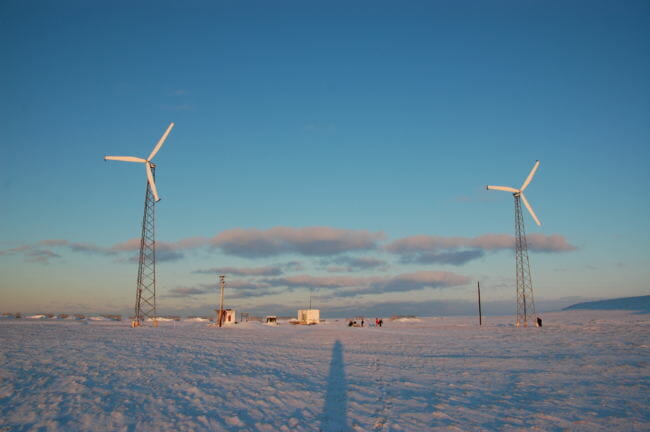
Many rural communities in Alaska have been experimenting with renewable energy systems in recent years, trying to reduce the amount of costly fuel they have to ship in. In late December, researchers at the Alaska Center for Energy and Power published a series of articles looking at how those technologies are doing, and what challenges remain in making them more cost effective.
The analysis includes data from wind, solar electric, biomass, and several other energy technologies that are currently in use in over 100 rural communities around the state.
Erin Whitney is one of the lead researchers. She says that renewable energies are helping to bring costs down in many rural areas, but there are still improvements to be made. One of the big takeaways from her team’s analysis is that the cost of maintaining renewable energy systems — not just installing them — can put a real burden on communities. She says that finding ways to streamline the maintenance process, or coming up with other ways to bring the cost of down is key to making renewable energy solutions sustainable in rural Alaska.
The research was made possible by a grant from the Alaska Energy Authority back in 2015. It was part of their effort to come up with recommendations for making energy more affordable in parts of the state that won’t have access to the proposed natural gas pipeline.
But Whitney hopes that this information will also be useful outside Alaska. There are many communities around the world with similar energy access issues that are looking for solutions.
“It shouldn’t be used as a manual but it is a good place to start,” said Whitney.
And because the rural systems featured in the analysis consist of small independent power stations – also known as micro-grids – the analysis may also be of interest to organizations wanting to experiment with those sorts of autonomous systems for security or resiliency reasons.
Whitney says that many of the villages included in the analysis are cited by name, which means that anyone interested in finding out more about how a particular technology was used can follow up with the village themselves.